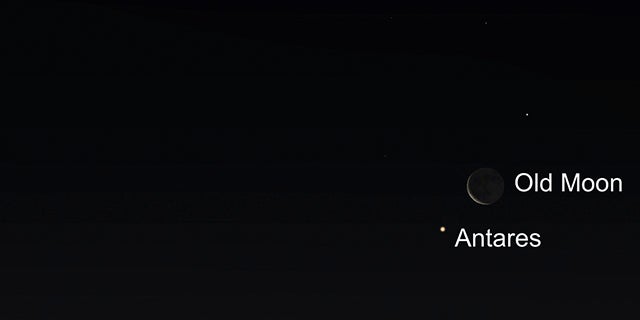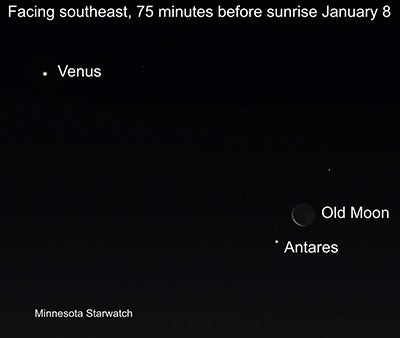StarWatch: Colder air and clearer skies
Published 5:59 pm Tuesday, December 26, 2023

- Graphic provided
|
Getting your Trinity Audio player ready...
|
By Deane Morrison
January may be frigid, but the cold air means clearer skies for viewing the jewels scattered among the iconic winter stars.
By the 7th, hourglass-shaped Orion, the hunter, and all its companion constellations will be up in the southeast at 8 p.m. The last of the bright winter stars to clear the southeastern horizon is Sirius, in Canis Major, the big dog. Sirius outshines the other stars, but high in the south, brilliant Jupiter dominates the sky.
As you gaze at Orion, notice the glowing nebula in his sword. The sword hangs from the three closely spaced stars of his belt, which form the ”waist” of his hourglass shape. Extending a line through the belt stars upward, you’ll see Aldebaran, the eye of Taurus, the bull. The V-shaped face of the bull, formed by stars of the Hyades cluster, is also an eye pleaser. Then look to the upper right of Aldebaran to view the young—astronomically speaking—and beautiful Pleiades star cluster.

Graphic provided
But as the winter stars climb in the east, Saturn sinks in the west. If you’re unsure which object is the ringed planet, a young crescent moon hangs below it at nightfall on the 13th.
In the predawn sky, regal Venus still shines low in the southeast. During the first two weeks of January, watch red Antares, the heart of Scorpius, climb past the planet. On the 8th, don’t miss the spectacle of an old crescent moon threatening to blot out Antares.
On the 2nd, Earth reaches perihelion, its closest approach to the sun in an orbit. At that moment we’ll be about 91.4 million miles from our parent star and moving at top speed around it.
January’s full moon rises on the 25th and follows the gaggle of winter constellations across the night sky. Following those stars every night is Regulus, the heart of the spring constellation Leo, the lion.
The University of Minnesota offers public viewings of the night sky at its Duluth and Twin Cities campuses. For more information, see:
• Duluth, Marshall W. Alworth Planetarium: www.d.umn.edu/planet
• Twin Cities, Minnesota Institute for Astrophysics: www.astro.umn.edu/outreach/pubnight
Check out astronomy programs, free telescope events, and planetarium shows at the University of Minnesota’s Bell Museum: www.bellmuseum.umn.edu/astronomy
Find U of M astronomers and links to the world of astronomy at: http://www.astro.umn.edu

